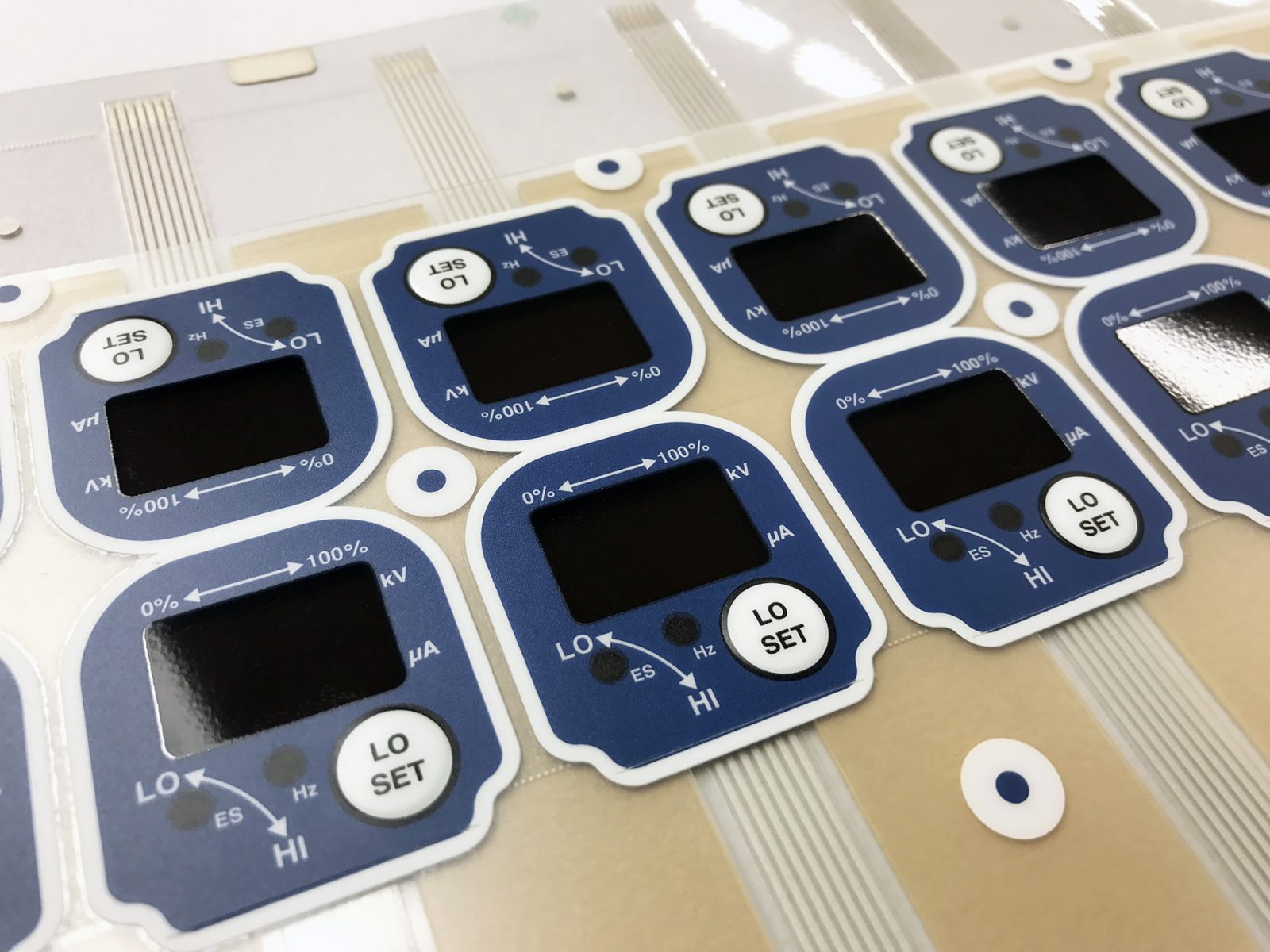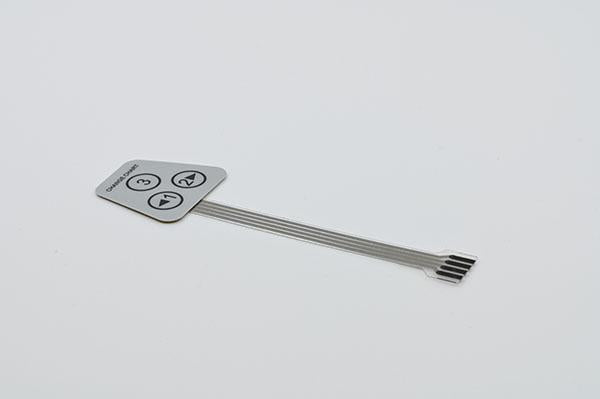Discover How Membrane Switches Function and Their Function in Modern Electronic Devices
Membrane Switches stand for a sophisticated integration of technology and layout within the world of modern-day electronic devices, working as vital interfaces in numerous tools. Consisted of multiple layers, these buttons use pressure-sensitive mechanisms to facilitate customer interaction. Their applications extend different industries, from customer electronics to clinical equipment, highlighting their versatility and value. Comprehending the intricacies of Membrane switch capability and their wider effects in improving user experience invites additional exploration right into their design, benefits, and the cutting-edge advancements forming their future in innovation.
What Are Membrane Buttons?

Membrane buttons are identified by their longevity and resistance to ecological factors, such as dirt, moisture, and severe temperatures. They can be personalized with different graphics, colors, and tactile comments options, enhancing user experience while maintaining visual appeal - membrane switches. Furthermore, the consolidation of published circuits permits seamless assimilation into devices, enhancing total functionality.
The flexibility of Membrane buttons appears in their ability to sustain both complex and basic control functions. They can integrate functions such as LED indications and touch-sensitive innovation, accommodating specific individual requirements. As technology proceeds to advance, Membrane Switches stay crucial for allowing effective and intuitive interface, thus playing a pivotal duty in the advancement of contemporary digital tools.
Elements of Membrane Buttons
Membrane switches are composed of a number of key parts that interact to produce a dependable and useful user interface. The key elements consist of the graphic overlay, sticky layer, spacer layer, and conductive traces.
The visuals overlay acts as the customer interface, typically printed on a flexible substratum such as polyester or polycarbonate. This layer not only gives aesthetic allure yet likewise includes responsive feedback, aesthetic cues, and safety functions. Under the graphic overlay exists the glue layer, which safeguards the switch to the device and guarantees resilience against environmental tensions.
The spacer layer is crucial for preserving the required void in between the graphic overlay and the circuit layer. This void permits the activation of the switch when pressure is used. The conductive traces, generally made from silver or carbon, form the electric paths that complete the circuit when the button is engaged.
Furthermore, a backing layer might be consisted of for architectural support and insulation. These parts team up perfectly, ensuring that Membrane switches are both durable and user-friendly, making them crucial in numerous contemporary electronic applications.
Just How Membrane Switches Job
How do Membrane Switches feature successfully within electronic devices? Membrane Switches run on the principles of pressure-sensitive modern technology, utilizing a layered building that consists of graphic overlays, sticky layers, and conductive components.
The style of Membrane buttons is essential for their effective operation (membrane switches). The layers are meticulously engineered to provide tactile feedback, resilience, and resistance to environmental factors such as moisture and dust. The addition of domes-- little, elevated locations within the switch-- boosts tactile response, offering customers with an obvious click sensation upon activation
Furthermore, Membrane buttons can be personalized in regards to dimension, shape, and graphics, making them appropriate for different applications. They are typically used in control panels, clinical gadgets, and consumer electronics as a result of their streamlined layout and dependability. Generally, the reliable performance of Membrane switches is pivotal in improving individual communication and ensuring seamless procedure in contemporary electronic devices.

Applications in Modern Instruments
Utilizing their unique design and performance, Membrane switches have actually become essential elements in a vast array of contemporary digital tools. These flexible user interfaces are employed in consumer electronics, industrial devices, clinical look at more info gadgets, and auto controls, giving seamless customer interaction.
In consumer electronics, Membrane buttons are typically found in home appliances like microwaves, washing makers, and various other house tools, where they enable user-friendly control with a smooth profile. Their low-profile design facilitates integration into compact devices, improving aesthetic charm without jeopardizing performance.
In commercial applications, Membrane Switches function as control panels for equipment, supplying resilience and resistance to severe environments. Their capacity to withstand moisture and impurities makes them excellent for use in manufacturing and processing industries.
Clinical tools also benefit from Membrane buttons, which are developed to be very easy to tidy and preserve, guaranteeing hygiene in medical settings. They are frequently used in analysis equipment, patient monitoring systems, and mobile medical devices, where reliability is paramount.
Benefits of Membrane Buttons
One of the essential advantages of Membrane buttons is their adaptability, which permits them to be tailored for a selection of applications across several markets. These buttons can be created in various shapes and dimensions, fitting unique product demands while providing smooth combination right into gadgets. Their slim profile enables a streamlined and compact style, typically boosting the aesthetic allure of electronic items.
Another considerable benefit is their longevity - membrane switches. Membrane switches are commonly resistant to dust, dampness, and chemicals, making them ideal for severe settings. This resilience prolongs their life-span contrasted to conventional mechanical buttons, reducing the need for regular substitutes
In addition, Membrane Switches offer cost-effectiveness. The manufacturing process includes printing modern technologies that minimize production expenses, especially for huge runs. This affordability, combined with low maintenance demands, makes them an eye-catching alternative for manufacturers.

Conclusion
Finally, Membrane Switches stand for a substantial improvement in interface technology within modern electronics. Their layered building and construction, pressure-sensitive operation, and versatility to different applications underscore their relevance throughout multiple industries. The sturdiness and ecological resistance of Membrane Switches further boost their appeal, making them a recommended option for producers seeking customizable and trusted services. As the need for resilient and instinctive interfaces remains to grow, the function of Membrane buttons fit user experience will undoubtedly expand.
Membrane Switches go to website stand for a sophisticated integration of modern technology and design within the world of modern-day electronic devices, offering as necessary user interfaces in countless gadgets.In the world of contemporary electronics, Membrane Switches offer as essential parts that promote user communication with tools. As modern technology proceeds to advance, Membrane Switches continue to be important for allowing user-friendly and efficient customer interfaces, consequently playing a critical role in the advancement of contemporary digital tools.
Exactly how do Membrane Switches this hyperlink feature successfully within electronic tools? Overall, the reliable functioning of Membrane buttons is pivotal in enhancing user interaction and making sure smooth operation in modern electronic devices.